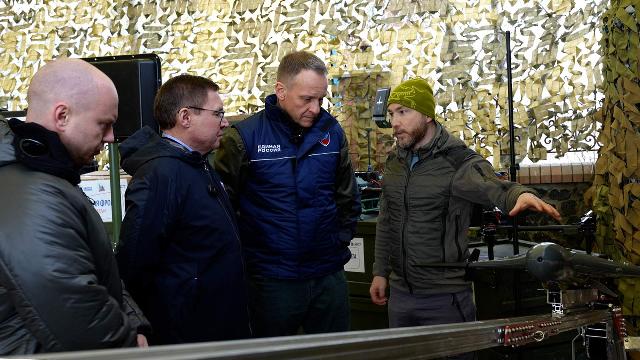The Tyuvik drone is capable of overcoming enemy electronic warfare systems thanks to artificial intelligence
In Russia, mass production of a smaller version of the Geranium drones has begun, which are widely used in the course of its military operations. This is a small Tyuvik drone, which looks like the famous kamikaze long-range UAV. The new devices are designed for combat work directly on the front line — it is almost impossible to silence them with electronic warfare. Experts note that the new drones will be able to effectively break through the enemy's electronic defenses.
A drone with intelligence
The new light impact wing "Tyuvik" got its name in honor of the bird of prey of the hawk family. Externally, the device repeats on a reduced scale the contours of the long—range UAV "Geranium" - they are made according to the same aerodynamic scheme "flying wing". For this similarity, the car was nicknamed the mini "Geranium".
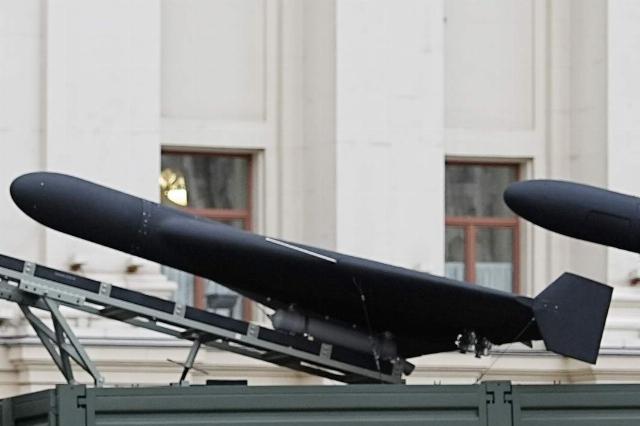
UAV "Geran-2"
Image source: Photo: IZVESTIA/Pavel Volkov
The new UAV has already passed its baptism of fire in the SVO zone and now its mass production has begun, the developers of the device from the Stratim design bureau told Izvestia.
"This light attack wing is designed to destroy armored vehicles," the founder of the Stratim Design Bureau with the call sign Obi—Wan told Izvestia.
Such devices start with a guide. They are controlled by an operator and are adapted to counteract the operation of electronic warfare systems through the use of electronic warfare-stable communications of Posemka's own design.
In addition, Tyuvik can overcome electronic warfare zones on autopilot without using satellite navigation systems and communication with the operator. At the final stage, the device can be aimed at the target.
The range of the drone is 30 km, the flight time is 25 minutes. The device can accelerate to a speed of 180 km/h. The adjustable payload is about two kilograms, which is equivalent to the weight of a cumulative shot from an RPG-7, the developers emphasize.
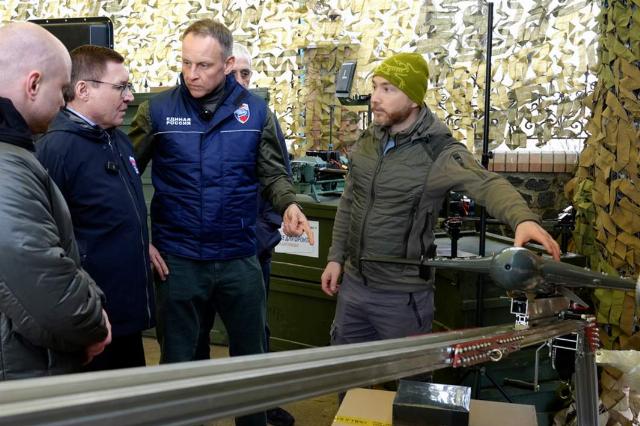
Tyuvik UAV
Image source: Photo: CBST Press Service
In Russia, several companies are developing artificial intelligence (AI) for the autonomous operation of FPV drones in electronic warfare conditions, Andrey Bezrukov, head of the Center for Unmanned Systems and Technologies (CBST), told Izvestia.
— The CBST supports diversification, but notes the high demand of the Russian Armed Forces for aircraft-type FPV attack drones with manual or vertical launch — catapults unmask the calculation. Tyuvik from Stratim is one of the most promising developments. The next stage is to intercept enemy drones and launch them from compact drone ports," he said.
There are many unmanned vehicles with similar characteristics operating at a range of several tens of kilometers on the line of combat contact, one can recall the same Lancets, military expert Yuri Lyamin told Izvestia.
— It is important to understand that the Tube will definitely not be superfluous, — he explained. — Now we need to work out different machines, look at their concepts, efficiency, reliability, cost. Only real combat conditions can show how effective a particular novelty is. The cost factor is also important. A tactical drone does not have to be expensive, as it is a mass-produced product, but at the same time it must be as effective as possible.
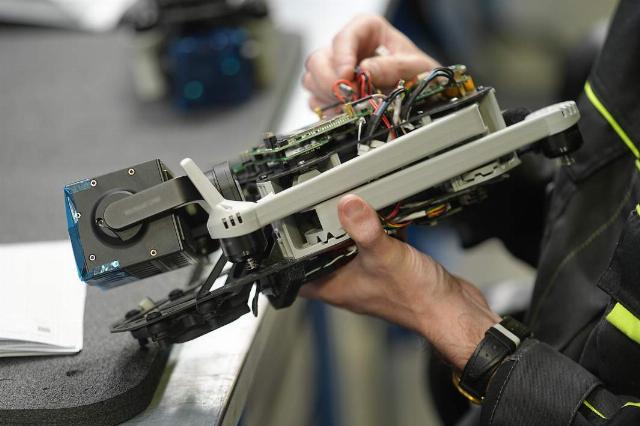
Photo: IZVESTIA/Pavel Volkov
Image source: iz.ru
Tyuvik has several important advantages, the expert noted.
"Judging by the stated characteristics, the machine can operate in conditions of harsh operation of electronic warfare systems and not lose its target if the communication channel is lost," the expert noted. "The guidance system with artificial intelligence technology is also interesting. Homing and flight are impossible without them. For example, such a machine can perform an autonomous flight by comparing a landscape image with a map embedded in it in advance. To search, destroy and target targets on board, you need to have an electronic file of the necessary objects, using which the drone will find an object to strike. This is generally one of the most important technologies of tactical drones — it will allow you to strike at moving targets. This is the only way to break through the enemy's serious anti-drone defenses.
The prospects of such drones are understood not only in Russia.
— Western countries are currently doing the same work, — said Yuri Lyamin. — In the course of a clash with a serious army, such qualities of a UAV cannot be dispensed with now.
UAVs are going into battle
In December, Defense Minister Andrei Belousov announced that a new branch of the armed forces would be created in Russia — the troops of unmanned systems. They should be formed in the third quarter of 2025.
The head of the military department noted that the mass use of drones has become the most significant breakthrough in the tactics of the Russian Armed Forces units. According to the minister, Russian troops use more than 3,500 drones every day, and this figure is growing.
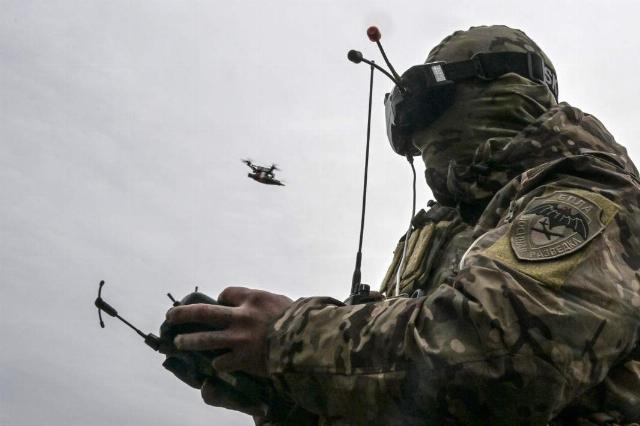
Photo: RIA Novosti/Evgeny Biyatov
Image source: iz.ru
The role of drones in the Russian Armed Forces is constantly growing. In August last year, the Rubicon Center for Advanced unmanned technologies was established by the military department on the basis of one of the combat units of unmanned aviation. He is engaged in the training of operators of UAVs and robotic complexes (RTK), as well as the development and implementation of new RTK systems in the military. One of the key areas of Rubicon's work is the training of highly qualified instructors from among drone operators with combat experience.
Earlier, Izvestia wrote that the railroad warriors began practicing the fight against unmanned aerial vehicles (UAVs). Standard small arms, smoothbore weapons, anti-aircraft artillery installations, which are placed on special armored trains, and electronic warfare (EW) equipment are used to destroy drones. The classes are conducted by instructors who have gained combat experience in the special operation area.
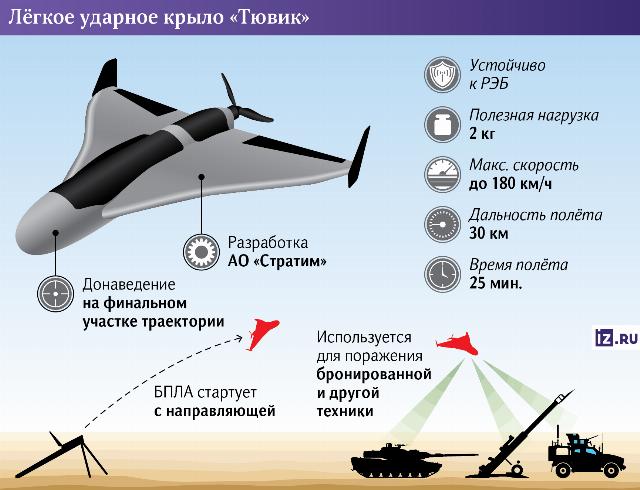
Now specialized formations and units of drones are being created not only in the ground forces and in the Russian Navy. Earlier, Izvestia wrote that regiments of unmanned systems are being created as part of the Navy. They will combine different types of robotic equipment: air, land and sea.
The new units, which will be formed in all fleets, will perform reconnaissance and strike functions. Combining different types of drones in one part will make it possible to effectively conduct reconnaissance, surveillance, and destruction of marine and coastal facilities. And also to carry out anti-submarine measures or conduct mine warfare.
Bogdan Stepovoy
